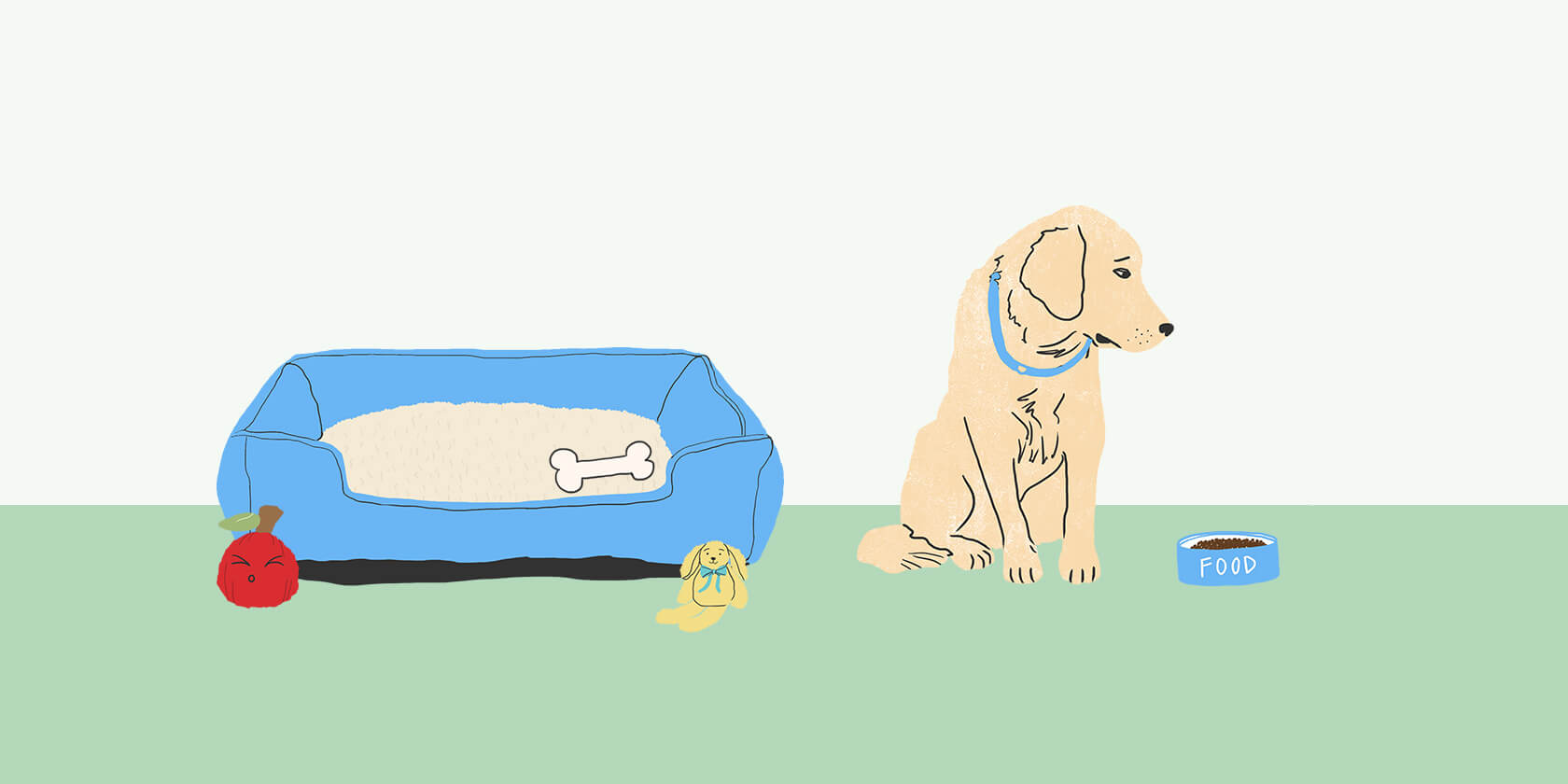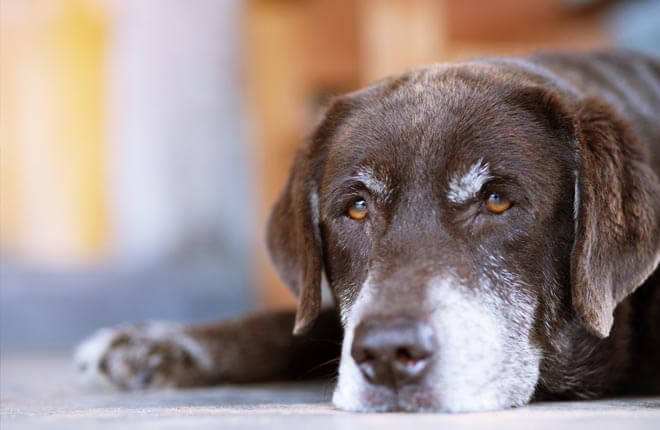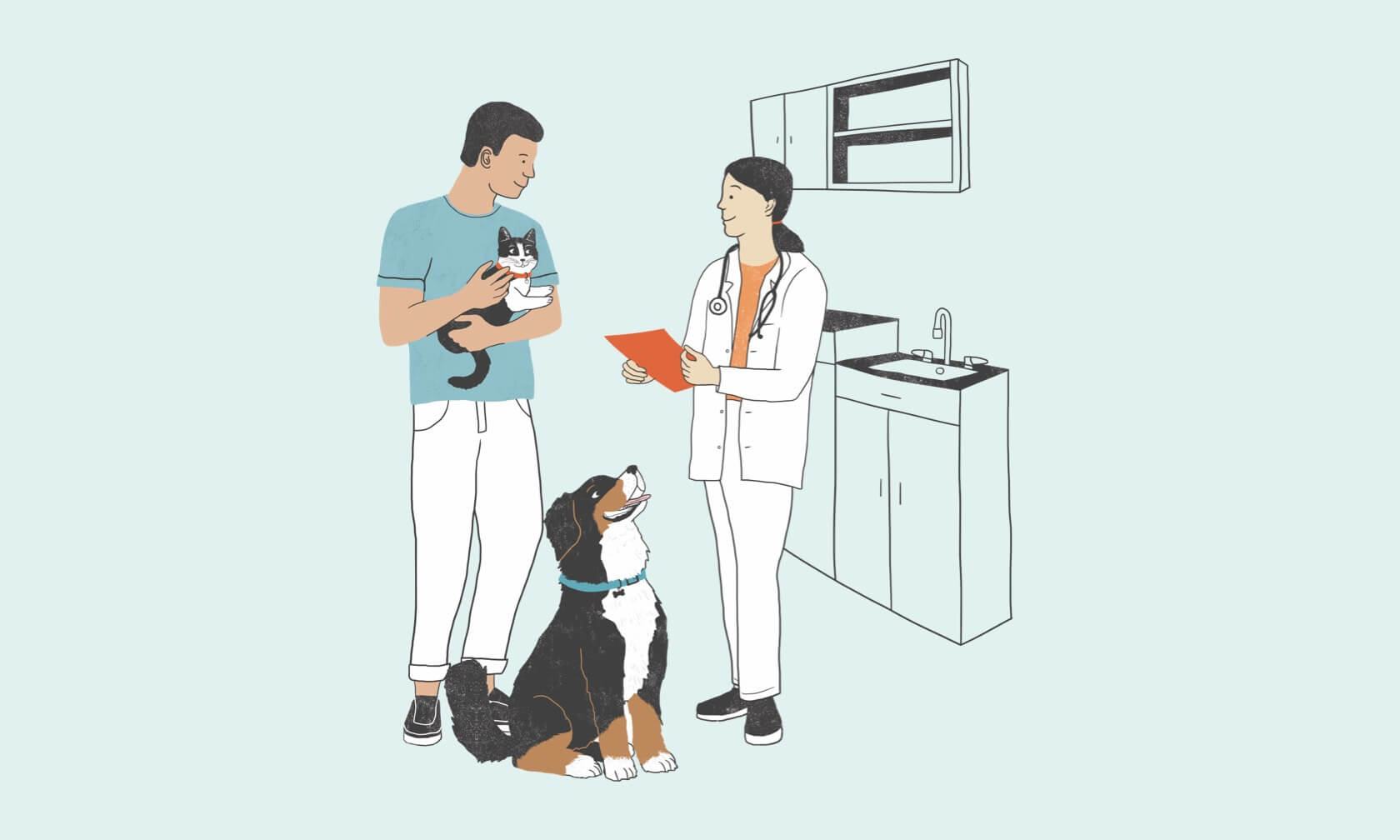The gastrointestinal system is an intricate machine that converts the food our dogs eat into nutrients and energy they can use and then expels the remaining waste. Unfortunately, there are times this machine doesn’t function the way it’s meant to. One of those times is when our dogs become constipated. Although it’s not the most fun topic, it’s important to understand what constipation is, how it happens, and most importantly, what we can do about it.
What is Constipation?
Constipation is the term used when there is infrequent stool or stool is difficult to pass. When stool is passed, it is often hard and dry.
How Do I Know My Dog Is Constipated?
Most dogs have a general daily pooping pattern. You should have a sense how many times your dog poops per day and it can vary — mostly dogs will poop 1-4 times a day. Their pooping habits tend to correspond with their feeding schedules. It’s usually not considered constipation if your dog misses one or two poops occasionally (as this can happen with changes in environment, food, or activity). But if they have not passed any stool in a couple of days or if you notice any signs of an issue, it’s time to pay close attention and consider a call to your veterinarian.
Your dog's only sign of constipation may not be pooping, but they generally will have other signs. So, knowing their potty habits is helpful. Other times, you may see some of the following signs:
- Decrease in the amount of stool per day
- Abnormal looking stool that is dry, hard, has an irregular size and shape, or small amounts of watery poop with or without mucus
- Squatting to poop for longer than normal or squatting frequently. Keep in mind, an even more common problem seen in dogs is diarrhea/gastroenteritis. Pet parents often think their dog is constipated because they are squatting, but they are actually having the opposite problem.
- Dragging their hind end on the ground
- Licking at their back end
- Swelling or protrusion of the rectum
- Yelping as they posture to poop
- Decreased appetite
- Discomfort and/or tension around the abdomen
If you notice these signs and/or your dog does not produce a bowel movement for two to three days, contact your veterinarian for advice.

What Causes Dog Constipation, and How Can You Help?
As with most health issues, many things can cause or contribute to constipation. Being aware of the possible causes can help you prevent constipation in the future and also gives you some tools to tackle it while it’s happening (with your veterinarian’s approval).
Lack of Adequate Dietary Fiber
This is one of the most common causes of dog constipation. If this is a short-term problem, fiber can be supplemented in the diet or your vet can recommend a high fiber diet. If this is a more long-term issue for your dog, commercially produced, high-fiber diets can be used. The best way to increase fiber in your dog's diet is changing their diet. Speak with your veterinarian about which food to try and keep in mind that you will need to switch them slowly to a new diet with increased fiber. Sometimes adding food with more fiber can help, but be sure to ask your veterinarian first and only gradually add these foods to your dog's diet.
- Green beans.
- Canned pumpkin. For small dogs, start with ½ to 1 tsp per meal. For medium to large dogs, start with 1 to 2 tablespoons per meal. You can gradually increase the amount to reach the effective dose. Be aware that using too much per day can result in diarrhea. Make sure to use only pure canned pumpkin; pumpkin pie spice or other additives can be dangerous for your dog.
- Apples. Do not feed your dog the core or seeds.
- Dark leafy green vegetables.
- Cooked brown rice.
Dehydration
Dogs who aren’t getting enough water each day can easily become constipated.
- Pet water fountains provide fresh, moving water that often prompts dogs to drink more.
- Add extra water bowls around the home.
- Add warm water to dry food.
- Switch to canned, wet food or add some wet food to their dry food.
If your dog has medical conditions such as diabetes or kidney disease, they are at a greater risk of becoming dehydrated. Consult with your veterinarian on the best way to keep them hydrated.
Matted Fur Over the Rectum
If you have a long-haired dog, get regular sanitary clips by a trusted groomer or your veterinarian.
Anal Gland Infection or Impacted Anal Glands
The anal glands sit on either side of the anus and problems with them can make having a bowel movement painful, so your dog will avoid going potty.
- Increase fiber in your dog’s diet to help them naturally express their own glands more easily.
- If your pet is overweight or obese, decreasing their weight is helpful.
- Regularly have their anal glands expressed by your veterinarian.
- If your dog has repeated anal gland problems, there might be something wrong with the anal glands themselves. Your veterinarian can help determine if this is the case and what might be done to manage the issue.
Lack of Activity
Physical activity helps with digestion.
- Take longer walks or more frequent short walks.
- If decreased activity is due to arthritis or another source of pain, ask your veterinarian about pain medication. Some dogs benefit from a support harness that allows their owner to aid them in squatting.
Certain Medications or Supplements
Some medications and supplements can contribute to constipation. You can consult with your veterinarian about switching or stopping such medications or supplements if they seem problematic for your dog.
Imbalanced Gut Bacteria
The gastrointestinal tract is normally home to an incredible amount of healthy bacteria (called the “gut flora”) living in balance. These gut bacteria are extremely important to the digestion and processing of food and the excretion of waste. When there is an imbalance in gut bacteria and certain bacteria are not present or are present in too large of a number, it can lead to poor quality stool. Prebiotics and probiotics can be given as supplements or food additives and can be very beneficial to your dog’s gut. Prebiotics are sources of nutrition for gut bacteria and probiotics are healthy bacteria themselves; both products work to increase the number and health of the gut flora.
Other causes of dog constipation requiring veterinary care:
- Ingestion of foreign objects such as toys, stones, or cloth. If you see any foreign objects, especially string-like materials, protruding from your dog’s rectum, do not attempt to remove them yourself. Seek medical attention immediately.
- Hernias, or masses within the intestinal tract. Causes such as these may require surgical intervention.
- Neurologic or orthopedic issues. Both orthopedic and neurologic issues can affect your dog’s comfort, mobility, and ability to defecate. If your dog has known orthopedic or neurologic issues, seek veterinary care as soon as you notice signs of constipation.
Your veterinarian is the best resource to instruct you on what to do if your dog is constipated. They may recommend food that has a high moisture or fiber content or stool softeners. Never use over-the-counter products for your dog without prior approval from your veterinarian. Some products can be harmful and potentially fatal when not given correctly.
ZPC-01320R1



